Original sisal topiary
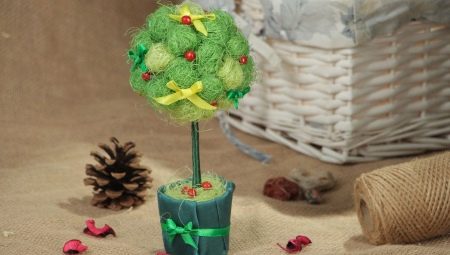
Topiary these days are at the peak of popularity, they represent a fashionable and stylish interior decoration, moreover, they are often used as a present for any celebration. It is noteworthy that making them is quite simple with your own hands - the most important thing is to carefully think over the style, decor, find a master class and follow the given step-by-step instructions.
In our review, we will tell you how to create a decorative sisal tree.
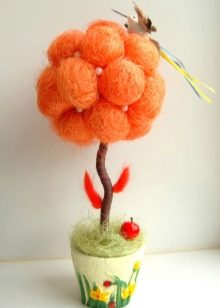
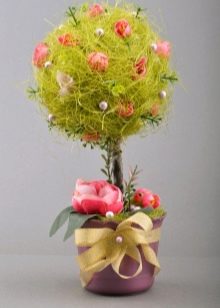
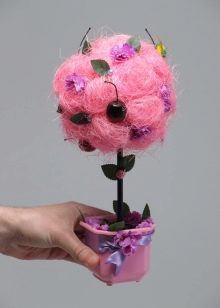
Peculiarities
Sisal is a natural fiber made from agave foliage. It is naturally tough and rough, but at the same time quite durable, which is why it is widely used to create ropes, washcloths, pet toys, ropes and even mattresses. In its natural state, the fiber has a dirty yellowish tint, so many craftswomen at work prefer to dye it. Usually, sisal is sold in the form of a large canvas or rolled into coils and packs, it is the last option that is most often purchased for crafts.
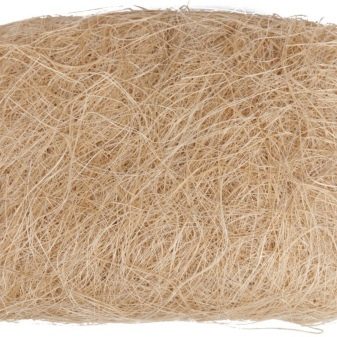
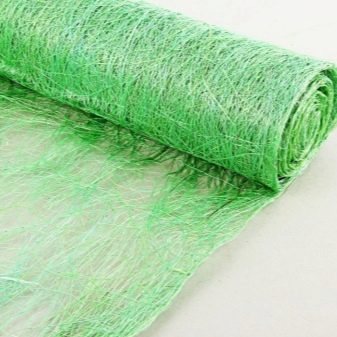
Depending on the task and the purpose of decorating the interior, it is sold both in a dense texture, reminiscent of cotton wool, and in the form of a thinnest canvas, like a spider web. Due to its ease of use and plasticity, with the help of fiber, decorative forms of a wide variety of volumes and densities can be obtained. Despite the fact that the material may seem weightless, it is highly durable, does not fade over time and holds its shape perfectly.
And due to the fact that it is easy to paint, the scope of the material is expanding many times over.
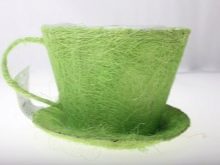
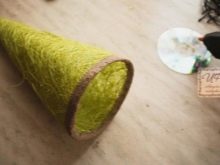
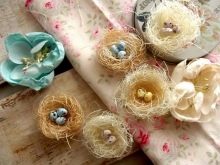
Interesting options
Sisal topiary is very popular when decorating the interior; they can have a variety of design forms, shades and sizes. For example, as a gift for a beloved woman on the spring holiday on March 8, delicate floral topiary decorated with beads are usually presented.
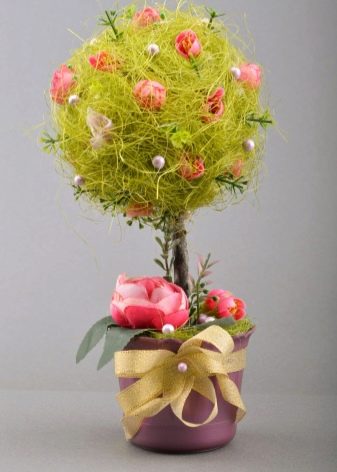
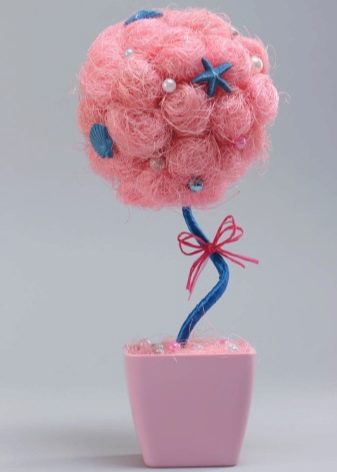
On New Year's Eve, Christmas trees are in demand, and such a green beauty can stand for more than one year. Many eminent designers resort to such material to create New Year's decor, this is due to its laconic form, ease of creation and non-triviality.
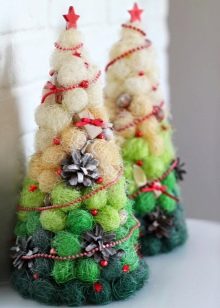
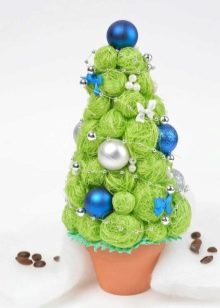
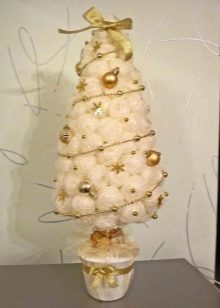
It is noteworthy that sisal balls can be made in different shades and sizes. The most interesting are the balls that are rolled from fibers of several shades, this gives topiary an interesting look and makes the process of their creation more fun.
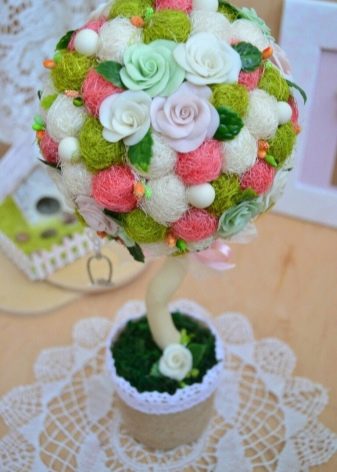
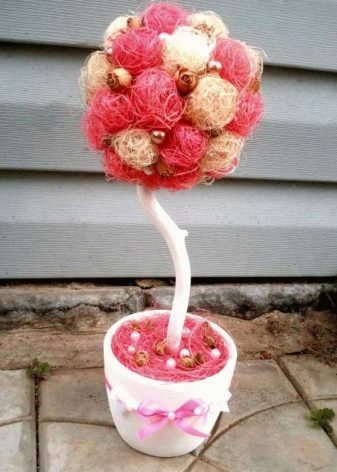
Without a doubt, a stylish accent in any interior will be topiary on a marine theme.
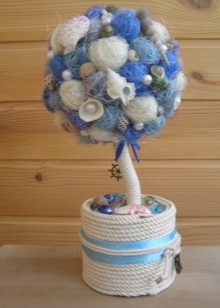
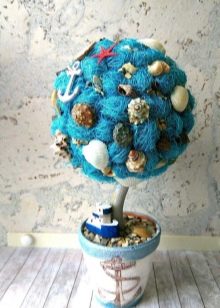
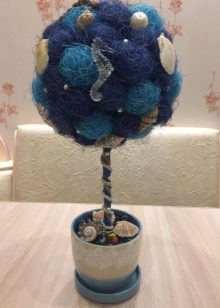
If you decide to prepare a topiary with your own hands, be sure to look around you and think about what you might need in the process of creating a tree of happiness. You can decorate it not only with ready-made decorative elements that are originally intended for these purposes, but also with fresh flowers and bright yellow and orange fruits. However, keep in mind that over time they tend to fade and lose their attractive appearance.
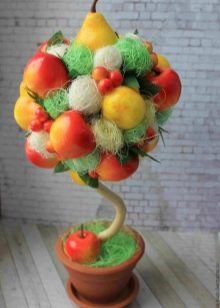
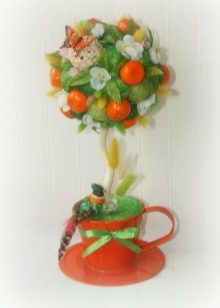
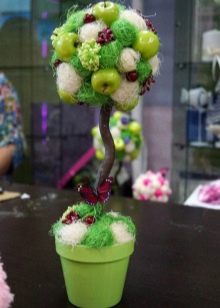
Alternatively, you can use dried or artificial specimens. When choosing flowers, be sure to follow simple rules:
- the decorative element must exactly match the entire topiary in terms of color and style;
- it is best to use small balls, otherwise the topiary will look too clumsy;
- it is advisable to remove the flower legs before installing.
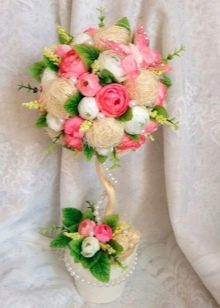
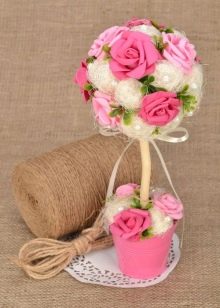
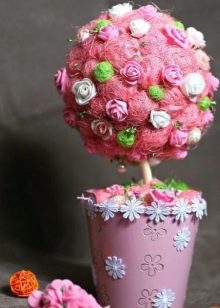
Materials and tools
The first thing that a master will need to work is directly floristic canvas. Unfortunately, it can be difficult to find it on the free market, in addition, its cost is high, so if you wish, you can always make this material from available tools.
First, you have to go to a store that sells home whitewash brushes. Please note that it is better to give preference exclusively to options based on natural pile - it is durable and thin. However, such a fiber has no color, the future topiary categorically does not accept this, so it needs to be given juiciness and color. To do this, you need to purchase an ordinary dye in tablet or powder form and dilute it in a vessel with warm water with the addition of a few drops of vinegar.
After that, the fibers of the brush are separated and soaked in a dye solution for several hours.
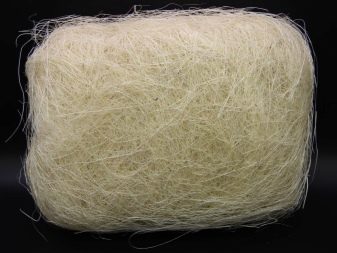

After the required time has elapsed, the sisal fibers are laid out on a horizontal surface. Of course, when doing this work for the first time, it makes sense to use only one shade so that the fibers can be thoroughly dyed. If you have some experience, it is more expedient to mix several colors at once - this way you can create more effective interior compositions. On this score, there are many master classes that can become good helpers in a creative matter.
When starting work, it is important to think in advance about where you will dry the fibers. Newspapers and paper with any printed print are categorically unsuitable for this, as their prints may remain on the blank. The ideal solution would be a clean and even snow-white surface.

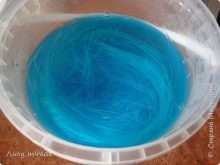
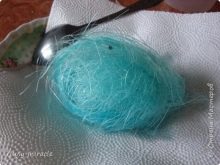
In addition to sisal, for making topiary you will need:
- gypsum / alabaster;
- pots;
- a branch or wooden stick;
- glue gun;
- decorations.
As a base, take a ready-made foam ball with a diameter of 7-10 cm, at the request of the craftswoman, you can use blanks of other dimensions.In the event that you do not have a foam ball at hand, you can make the base yourself - for this, newspapers are tightly crumpled and wrapped in a chaotic manner with threads to give it a spherical shape.
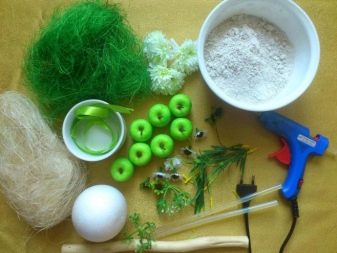
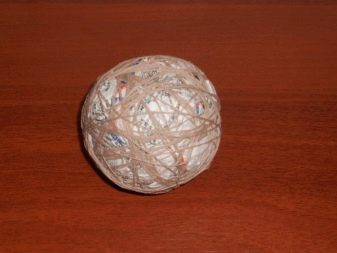
Phased production
When creating a topiary from sisal, first of all, you need to roll up small balls - this work is not difficult.
- Artificial fibers are carefully separated from each other and laid out on a flat horizontal surface.
- Then small circles are rolled in the palms, this should be done slowly and almost without using physical force. Each ball takes about 10 minutes. The workpiece should be a small, but rather dense glomerulus - it is this that is fixed to the base with glue.
- Based on the parameters of the base, you can roughly calculate how many glomeruli you need for topiary.
Of course, for novice craftswomen it will take a lot of time to make the first balls, but as soon as you get your hands on it, you can make them in a matter of minutes.
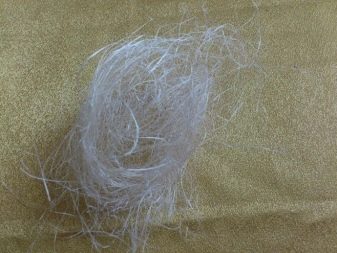
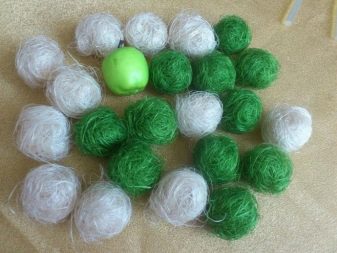
The assembly sequence is as follows step by step:
- for a start, plaster of paris is dissolved in water and, stirring, is brought to the state of sour cream;
- the resulting solution is poured into a cache-pot, cup or other container;
- a twig from a tree or a wooden stick is inserted in the center, which will act as a trunk - it should be kept in the composition until it completely hardens;
- after that, a base is fixed to the top of the trunk - a foam ball or a ball from newspapers;
- then it remains only to glue sisal balls to the ball, as well as decorative elements - flowers and leaves;
- for decoration, a circle is cut out in the lower part of the product from corrugated paper, the size of which is slightly larger than the bottom of the can, areas of paper that go beyond the boundaries of the container are coated with glue and gently pressed against the pots;
- additionally, the tree can be decorated with beads, shells, nutshells and other materials.
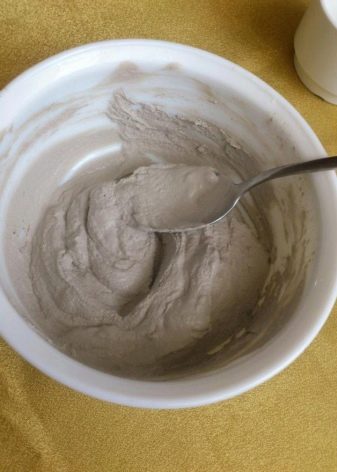
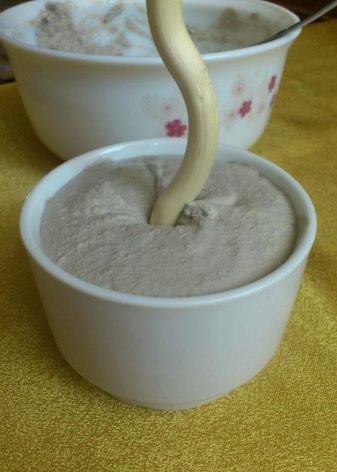
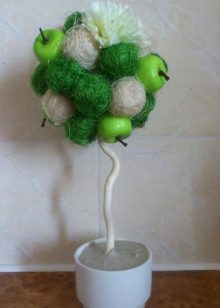
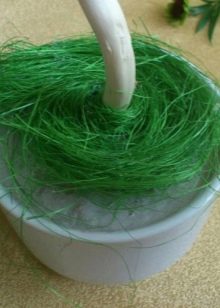
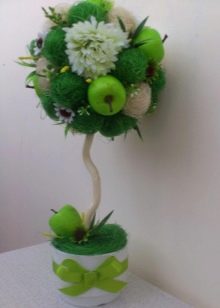
The sisal tree of happiness is ready.
For information on how to make sisal topiary yourself, see the next master class.








